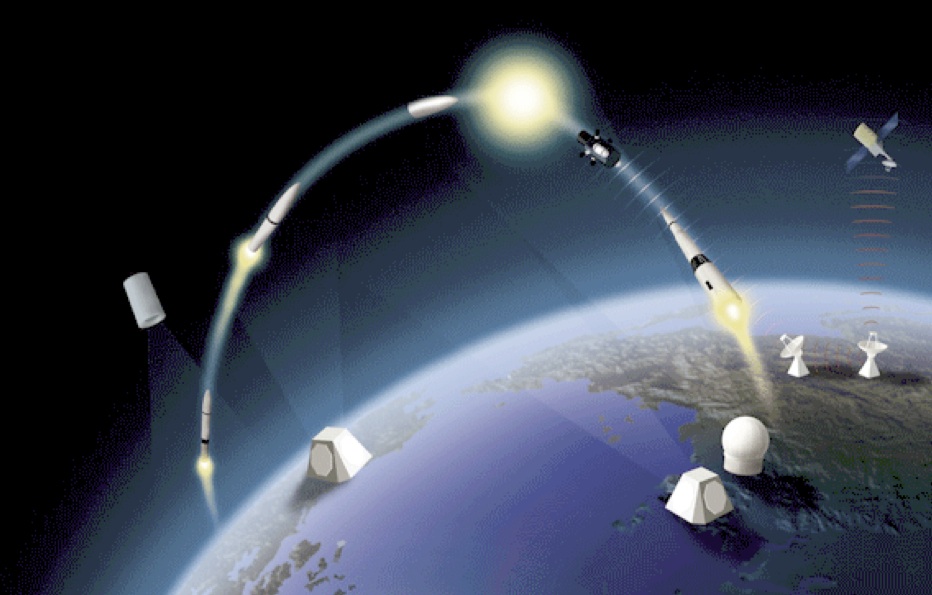Mead Treadwell, Lt. Governor of Alaska 2010-2014, is a charter member of the Independent Working Group on Missile Defense, which has since the mid-1990s studied and published independent views on how to deploy effective land, sea, air and space-based missile defenses for the U.S homeland and US forces and allies abroad.
Most Ground-based Interceptors to defend the homeland are located here in Alaska, the US State closest to North Korea. The previously deployed fleet of 26 GBIs will be expanded to 40 defensive missiles by the end of the year, plus another four at Vandenberg AFB, in California. With so much at stake, increasing our capability to take a volley of defensive shots is essential.
Missile defense also depends on radars across the North. At Clear, near Fairbanks, Alaska, a new Long Range Discrimination Radar will help improve the accuracy of our ground-based system. New communications links here and around the world help network space-based sensors, land and sea-based radars that direct theater and ballistic missile defense systems on our side, everywhere.
A new report by the Center for Strategic and International Studies entitled Missile Defense 2020, lays out a roadmap for how the United States can improve the capability, capacity, and reliability of U.S. homeland missile defense. One of the most important next steps, however, concerns the “Exoatmospheric Kill Vehicle (EKV), the payload atop those fast Alaska and California defensive missiles. The EKV’s job, after being rocketed into space on a trajectory opposite an incoming missile, is to intercept and obliterate anything that’s aimed at us.
These EKVs, the so-called bullets that hit the enemy bullet, are the heart of missile defense. We want them ever more aware as they approach their target, agile as countermeasures are employed, and accurate in knocking out a warhead that could kill millions of our people. Improvements to the EKV capabilities are available to be deployed soon, in the form of a Redesigned Kill Vehicle (RKV), an important development effort currently underway by the Missile Defense Agency. Some argue we should skip the RKV effort entirely, and wait for a whole new generation of kill vehicle technology that will require years of development and testing. In the face of real North Korean missile advances, however, such a path would leave us too vulnerable.
Offensive missiles are much cheaper than defensive missile systems, however, and potential adversaries in North Korea, Iran and elsewhere are stepping up efforts to build attack weapons that are more mobile, can carry more payload, and can fly farther across the planet. Last year, then- NORTHCOM/NORAD Commander Admiral William E. Gortney told Congress, “We need to invest in the lethality of our kill vehicles, and in ways to get us to the right side of the cost curve.”
We should draw upon already amassed expertise to cost-effectively re-engineer the RKV and get it deployed as soon as possible, as well as a more flexible selectable-stage booster. Among the many capabilities that would be improved quickly is the ability to hit targets launched at us closer to home.
Over the longer-term, a new interceptor, known as the Multi-Object Kill Vehicle (MOKV) is envisioned as having the capacity to defeat multiple targets, thereby overcoming the problem of discriminating between the warhead and other debris or decoys, as well as potentially against multiple warheads. However, the threat today is from North Korea, Iran, or a ship-launched missile that might be acquired in some arms bazaar by a terrorist group. These threatening missiles are growing in number. They are less sophisticated than Russia and China’s arsenal, but still lethal.
Robust research and development on other missile defenses must continue.
Technology will allow us –someday– to field more effective defenses against attack missiles in the boost phase, minutes after launch when missiles are most vulnerable and unable to deploy countermeasures. Non-kinetic options, like lasers, have great promise to further even the costs between offensive missiles and defenses. Given that missiles can disable much of our electrical infrastructure and electronic devices with an electromagnetic pulse from a nuclear explosion high above the earth hardening our civil power grid is a deterrent that should also rise on the agenda.
Donald Trump has pledged to develop a state-of-the-art missile defense for the United States. This is indeed exactly the right goal and is necessary for both deter and defeat current and future threats. Funding and fielding the Redesigned Kill Vehicle now, while still expanding root missile defense technologies, will improve that overall posture and help keep the peace..
